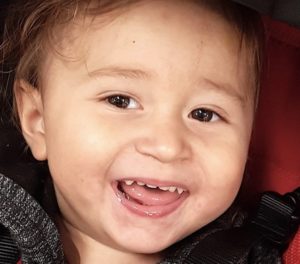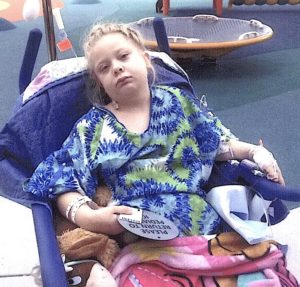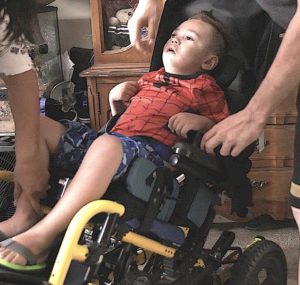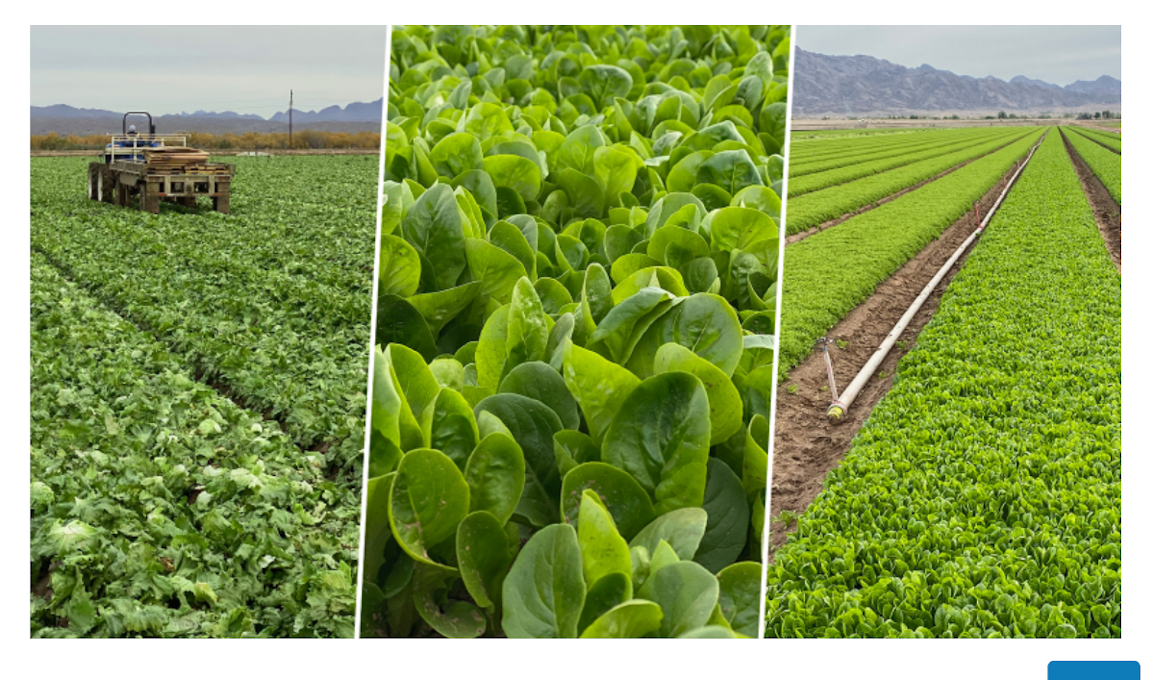2018 and 2019 were not good years for consumers of romaine lettuce grown in the fields of the southwestern United States, specifically the Yuma growing region of Arizona and the Salinas Valley of California. Although nearly 500 miles apart as the crow flies, the two regions share a notorious history of sickening consumers with a particularly lethal strain of Escherichia coli – O157:H7 – known to strike, and sometimes kill, the most vulnerable among us – children, elderly, and the immunocompromised. The two regions are particularly good at growing romaine lettuce, by virtue of back-to-back growing seasons from Spring to Fall.
Ideal growing conditions are what link these two agricultural areas, where most of the romaine lettuce is the United States is now grown. Salinas boasts California’s best weather in the spring and summer, while Yuma claims to be the sunniest populated place in the United States. As Salinas winds down its 4-month growing season every Fall, Yuma’s is just beginning—causing a shift of the same seasonal workers from one region to the other, until the process repeats itself yet again the following spring.[1]
YUMA (Jarboe)
 In 2018, the Yuma growing region was responsible for infecting 240 people with E. coli O157:H7 from 37 states in illnesses started on dates ranging from March 13, 2018, to August 22, 2018. Ill people ranged in age from 1 to 93 years, with a median age of 26. Sixty-six percent of ill people were female. Of the more than 201 people with information available, 104 were hospitalized, including 28 people who developed hemolytic uremic syndrome, a type of kidney failure. Five deaths were reported from Arkansas, California, Minnesota (2), and New York.[2]
In 2018, the Yuma growing region was responsible for infecting 240 people with E. coli O157:H7 from 37 states in illnesses started on dates ranging from March 13, 2018, to August 22, 2018. Ill people ranged in age from 1 to 93 years, with a median age of 26. Sixty-six percent of ill people were female. Of the more than 201 people with information available, 104 were hospitalized, including 28 people who developed hemolytic uremic syndrome, a type of kidney failure. Five deaths were reported from Arkansas, California, Minnesota (2), and New York.[2]
In addition to this outbreak being unusually large, case-patient clinical course was unusually severe. The proportion of case-patients developing HUS (12.7%) was twice as high as previous outbreaks of Shiga toxin-producing E. coli O157 (6.3%). There were five deaths in this outbreak (2.2%), which is almost four times higher than expected (0.6%). This could be explained by the strain’s Stx2a toxin subtype, which produces more virulent toxins than other types. Outbreaks with Stx2 toxin are more likely to result in increased rates of HUS.
SALINAS VALLEY (Parker)
 In 2018-2019, the Salinas Valley was responsible for 62 cases in an outbreak of E. coli O157:H7, which were reported from 16 states (CA, CT, FL, GA, IL, LA, MA. MD, MI, NH, NJ, OH, PA, RI, WI) and the District of Columbia.[3]Illnesses occurred from October 7 to December 4, 2018. Cases ranged in age from 1 to 84 years (median age of 25). Sixty-six percent of cases were female. Of 54 cases with information available, 25 (46%) were hospitalized, including two people who developed hemolytic uremic syndrome, a type of kidney failure. No deaths were reported.
In 2018-2019, the Salinas Valley was responsible for 62 cases in an outbreak of E. coli O157:H7, which were reported from 16 states (CA, CT, FL, GA, IL, LA, MA. MD, MI, NH, NJ, OH, PA, RI, WI) and the District of Columbia.[3]Illnesses occurred from October 7 to December 4, 2018. Cases ranged in age from 1 to 84 years (median age of 25). Sixty-six percent of cases were female. Of 54 cases with information available, 25 (46%) were hospitalized, including two people who developed hemolytic uremic syndrome, a type of kidney failure. No deaths were reported.
Jarboe (Yuma)
8-year-old Makayla Jarboe was one of Yuma’s early victims, becoming sick in April 2018, after consuming romaine lettuce from one of her favorite restaurants. Within a few days, Makayla was admitted to an Arizona hospital with symptoms of bloody diarrhea and rapidly falling platelets, the component of our blood that allows it to clot and stop us from bleeding to death. This is one of the first signs of hemolytic uremic syndrome (HUS), a deadly disease that develops when a toxin associated with the E. coli O157:H7 bacteria attacks the kidneys. For Makayla, the disease also affected her lungs, causing them to fill with fluid, and her entire body began to swell. Because of the effect on her kidneys, she also stopped urinating, which caused her fluid overload to worsen and reduced her ability to breathe adequately. Makayla soon required a chest tube to drain her lungs, and she had to be put on a mechanical ventilator to help her breathe. Because her kidneys failed with worsening HUS, she also had to be put on dialysis to cleanse her blood of toxins usually dealt with by urinating. After almost two weeks in the pediatric intensive care unit (PICU), Makayla was finally able to be taking off the breathing machine, but she continued to need dialysis to assist her failing kidneys. After 3 weeks in the PICU, she began to produce urine again, but it would be almost another month before she was able to be taken off dialysis. As if all that were not enough, Makayla also developed pancreatitis, a painful swelling of the pancreas and had to be fed through a feeding tube for months after she left the hospital. In all, she was in the hospital for 40 days. When she left, she was still on dialysis, but this was able to be continued as an outpatient for a week after she went home.
Makayla survived the initial attack of E. coli O157:H7, but it was not without consequences. She developed high blood pressure, some that can happen when the kidneys are damaged by HUS, and she had to be put on long-term blood pressure medication that she remains on still. She continues to suffer from gastrointestinal difficulties, including food intolerance and bowel issues she did not have before. She suffers from depression and anxiety, as well as cognitive issues, caused by a prolonged stay in the intensive care unit. She now has chronic headaches and possible neurologic damage, caused by another side effect of HUS – “encephalopathy,” which is damage from whole body swelling that did not spare the brain. The HUS encephalopathy is probably the reason for her cognitive impairment, and it is unknown whether this will be permanent.
 In addition, Makayla will be bound to kidney doctors and other specialists for life. She now suffers from chronic kidney disease, which is at a “Stage 3” for now. This means that, while her kidneys are damaged and have lost function, they are currently working to detoxify her blood. But since Makayla suffered from such severe HUS and needed prolonged dialysis, the “life” of her own kidneys is limited and it is expected that they will eventually fail entirely, and she will need to have at least one kidney transplant during the rest of her life. Kidney transplantation comes with its own set of problems, not the least of which is needing to be on strong drugs to prevent rejection. Perhaps the saddest consequence of Makayla’s E. coli O157:H7 infection and resultant HUS is the effect on childbearing. Pregnancy in women with chronic kidney disease can be very dangerous, especially if they are on hemodialysis. And pregnancy is considered too high risk and not advised for women who have had a kidney transplant.
In addition, Makayla will be bound to kidney doctors and other specialists for life. She now suffers from chronic kidney disease, which is at a “Stage 3” for now. This means that, while her kidneys are damaged and have lost function, they are currently working to detoxify her blood. But since Makayla suffered from such severe HUS and needed prolonged dialysis, the “life” of her own kidneys is limited and it is expected that they will eventually fail entirely, and she will need to have at least one kidney transplant during the rest of her life. Kidney transplantation comes with its own set of problems, not the least of which is needing to be on strong drugs to prevent rejection. Perhaps the saddest consequence of Makayla’s E. coli O157:H7 infection and resultant HUS is the effect on childbearing. Pregnancy in women with chronic kidney disease can be very dangerous, especially if they are on hemodialysis. And pregnancy is considered too high risk and not advised for women who have had a kidney transplant.
Parker (Salinas)
2-year-old Lucas Parker was not as “lucky” as Makayla when, in October 2018, he was sickened with E. coli O157:H7 after consuming romaine lettuce grown in the Salinas Valley. He is now a young child and no longer a toddler, but his life is forever changed and will never be normal.
A resident of British Columbia, Canada, Lucas and his family were on what was supposed to be an exciting and fun trip to Disneyland in Southern California, and he ate the lettuce en route while in a motel eating takeout. After arrival at Disneyland, he showed the first signs of getting sick and was “out of sorts” at the park, but the family went about trying to enjoy it and have some fun with the kids. However, on the road trip back to Canada over the next couple of days, the family did not quite make it back home before they were forced to stop in a hospital in Washington state so Lucas could be seen in the ER. Although in hindsight Lucas probably already had the beginnings of E. coli O157:H7 Shiga toxin associated (STEC) HUS, his bloody diarrhea in the ER was not recognized as such. So, he was given IV fluids and released so the family could continue the rest of the way home.
Within a day after getting there, Lucas was in an ambulance on the way to the hospital, summoned by his worried parents when the otherwise playful and happy little boy grew increasingly lethargic, began vomiting, and had more bloody diarrhea. At first, Lucas seemed to improve with IV fluids and antibiotics, but his platelet count dropped dramatically and it soon became clear he had severe HUS. He was moved from the ER observation suite to pediatric intensive care (PICU), and then he was transferred from the local hospital to a regional medical center with the technology to treat a very sick little boy with HUS.
After transfer, Lucas soon needed dialysis when his kidneys failed and he stopped making urine. He also developed high blood pressure and total body swelling. Then the worst possible thing happened—Lucas’ suddenly deteriorated neurologically and developed seizures and “posturing,” a visible arching of the back and stiffening of the body that signals severe brain damage. Brain damage was confirmed when the doctors did CT scanning of Lucas’ brain. Lucas was no longer responsive and continued to show posturing and more seizures, and he had to be put on a breathing machine to keep him alive.
Over the next few days, Lucas’ brain damage worsened, which the doctors knew because of more imaging (MRI and CT scans), as well as continuous electroencephalograms, which measure the electrical activity of the brain. For his continued kidney failure, he also had to be put on hemodialysis as he was no longer urinating. Lucas’ parents watched helplessly while their little boy remained unresponsive on a ventilator and showed no signs of waking up. Contractures developed in his arms and legs, which is a condition where the muscles do not relax and stiffen, so he was put on medication for that. Although unconscious, Lucas developed “stress gastritis,” or bleeding in the stomach from stress on the body.
Lucas’ condition was dire, and the doctors met with his family to talk about his prognosis. He had suffered severe brain damage, and it was unlikely they would ever see him regain much cognitive ability when he was no longer comatose. The doctors gave Lucas steroids, which helped reduce the brain swelling, in the hopes he would wake up. He was still breathing with the help of the mechanical ventilator, and after two weeks in the PICU, he opened his eyes but did not make eye contact or exhibit any purposeful movements. He began to produce a little urine at this point but remained on dialysis. Lucas was soon able to be removed from the mechanical ventilator, when “weaning” showed he could breathe on his own once again. However, he required frequent suctioning of mucous secretions, as he was unable to clear them on his own by volitional coughing or throat clearing, which conscious persons are able to do.
When more brain scans showed that Lucas was not recovering and in fact suffered even more brain damage (encephalopathy), the doctors talked to his parents about moving him to “palliative care,” which means a facility provides comfort and care without the expectation that the patient will improve enough to regain function and the ability for self-care. On hospital day 17, he was able to be removed from the breathing machine, a requirement to move him to palliative care. Lucas continued to produce urine and was taken off dialysis. But he continued to have seizures and remained unresponsive to meaningful communication (i.e., eye contact, purposeful movement). He was put on anti-convulsant medications to reduce or prevent the seizure activity. He continued to have contractures of his extremities and continued medications for that. Before moving Lucas to palliative care, a PEG tube was operatively inserted into his abdomen so he could be fed without having to use IV nutrition.
After a brief return to the hospital when an error in his contracture medication caused a decrease in his heart rate and breathing, Lucas was returned to and stabilized at the palliative care facility and was watched by neurology specialists for signs of improvement, but none occurred. He continued to exhibit signs of severe brain damage and remained obtunded. Lucas could “communicate,” but it was largely by crying in pain or discomfort, and he “responded” by quietening down and crying less.
 Despite the best efforts of the neurologists and other specialists, Lucas has remained “obtunded” and unable to meaningfully interact with his parents or others. He continues to require full assistance for all his needs. Lucas was discharged from palliative care in February 2019 after his dad and mom were trained to do his suctioning, feeding, bathing, and all other care he was going to need at home. He was set up for home health care skilled nursing, as well as physical therapy and other skilled services to visit the home without having to transport Lucas to the hospital so frequently.
Despite the best efforts of the neurologists and other specialists, Lucas has remained “obtunded” and unable to meaningfully interact with his parents or others. He continues to require full assistance for all his needs. Lucas was discharged from palliative care in February 2019 after his dad and mom were trained to do his suctioning, feeding, bathing, and all other care he was going to need at home. He was set up for home health care skilled nursing, as well as physical therapy and other skilled services to visit the home without having to transport Lucas to the hospital so frequently.
Lucas’ dad now has a routine he follows to take care of him, having become an expert in doing so as his full time caregiver. Lucas still receive in-home services, but it is never enough. Caring for him is a 24 hour job, with little time to rest. Although his dad sees improvement in his cognition on a day to day basis, Lucas does not have “cognitive ability” in ways the permit him to communicate his needs or participate in his life in any meaningful, volitional way. Lucas life expectancy is unknown, but he is expected to require at least one kidney transplant during his lifetime if he survives to adulthood.
(To sign up for a free subscription to Food Safety News, click here.)
___________________
[1] Salinas and Yuma Are 500 Miles Apart—But Agribusiness Is Growing Them Closer. (2018, November 10). Zócalo Public Square. https://www.zocalopublicsquare.org/2018/10/22/salinas-yuma-500-miles-apart-agribusiness-growing-closer/ideas/connecting-california/
[2] Lyndsay Bottichio, et al., Shiga Toxin-Producing E. coli Infections Associated with Romaine Lettuce – United States, 2018, Clinical Infectious Diseases (December 9, 2019), https://academic.oup.com/cid/advance-article/doi/10.1093/cid/ciz1182/5669965.
[3] CDC. (2020, November 23). Outbreak of E. coli Infections – Unknown Source 2. Centers for Disease Control and Prevention. https://www.cdc.gov/ecoli/2020/o157h7-10-20b/index.html.

